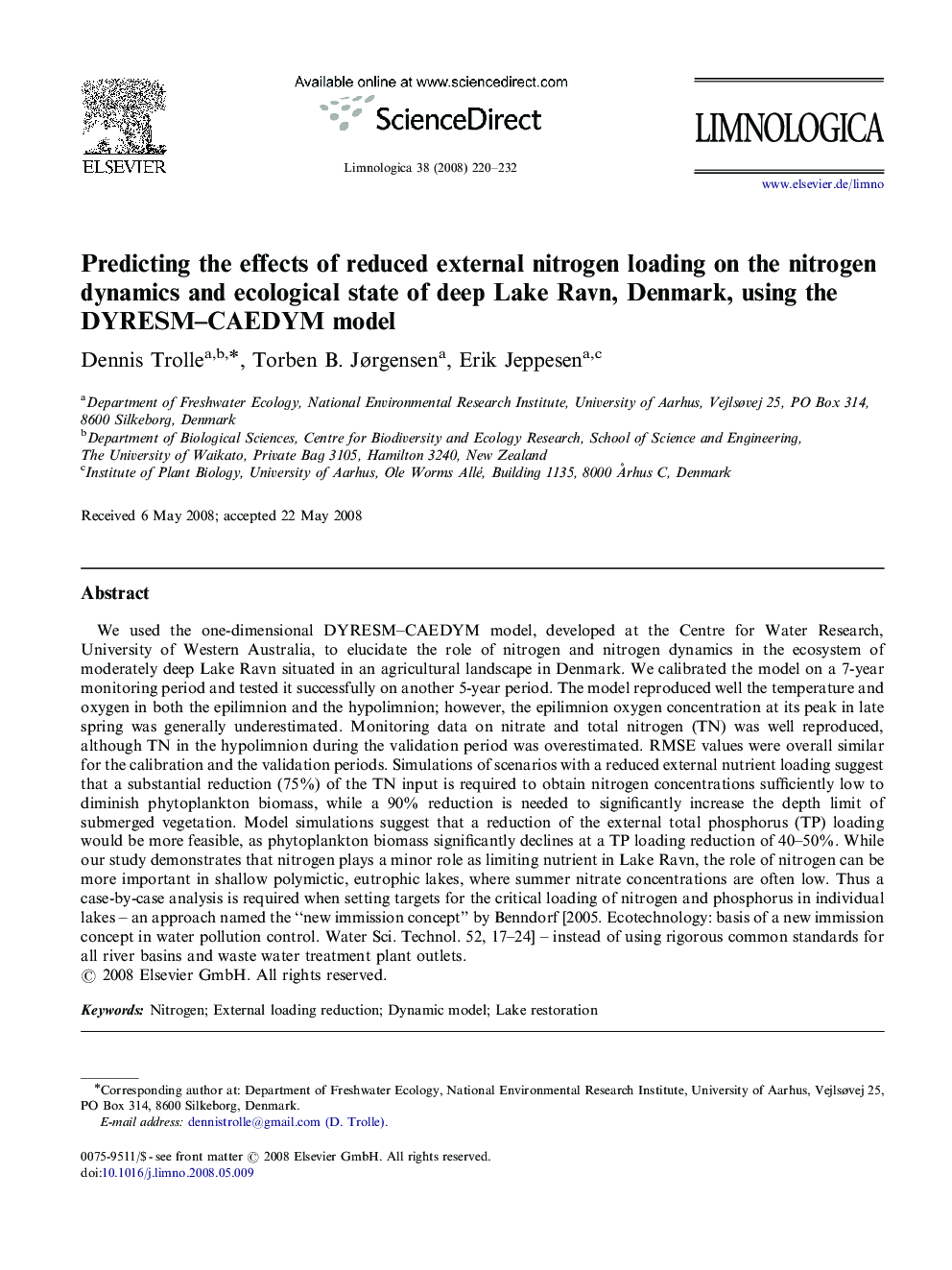| Article ID | Journal | Published Year | Pages | File Type |
|---|---|---|---|---|
| 4400682 | Limnologica - Ecology and Management of Inland Waters | 2008 | 13 Pages |
We used the one-dimensional DYRESM–CAEDYM model, developed at the Centre for Water Research, University of Western Australia, to elucidate the role of nitrogen and nitrogen dynamics in the ecosystem of moderately deep Lake Ravn situated in an agricultural landscape in Denmark. We calibrated the model on a 7-year monitoring period and tested it successfully on another 5-year period. The model reproduced well the temperature and oxygen in both the epilimnion and the hypolimnion; however, the epilimnion oxygen concentration at its peak in late spring was generally underestimated. Monitoring data on nitrate and total nitrogen (TN) was well reproduced, although TN in the hypolimnion during the validation period was overestimated. RMSE values were overall similar for the calibration and the validation periods. Simulations of scenarios with a reduced external nutrient loading suggest that a substantial reduction (75%) of the TN input is required to obtain nitrogen concentrations sufficiently low to diminish phytoplankton biomass, while a 90% reduction is needed to significantly increase the depth limit of submerged vegetation. Model simulations suggest that a reduction of the external total phosphorus (TP) loading would be more feasible, as phytoplankton biomass significantly declines at a TP loading reduction of 40–50%. While our study demonstrates that nitrogen plays a minor role as limiting nutrient in Lake Ravn, the role of nitrogen can be more important in shallow polymictic, eutrophic lakes, where summer nitrate concentrations are often low. Thus a case-by-case analysis is required when setting targets for the critical loading of nitrogen and phosphorus in individual lakes – an approach named the “new immission concept” by Benndorf [2005. Ecotechnology: basis of a new immission concept in water pollution control. Water Sci. Technol. 52, 17–24] – instead of using rigorous common standards for all river basins and waste water treatment plant outlets.
